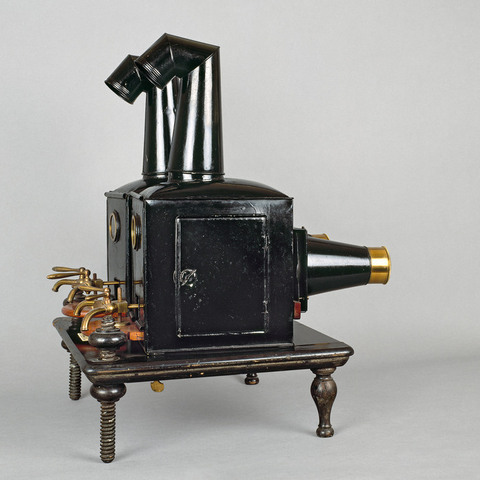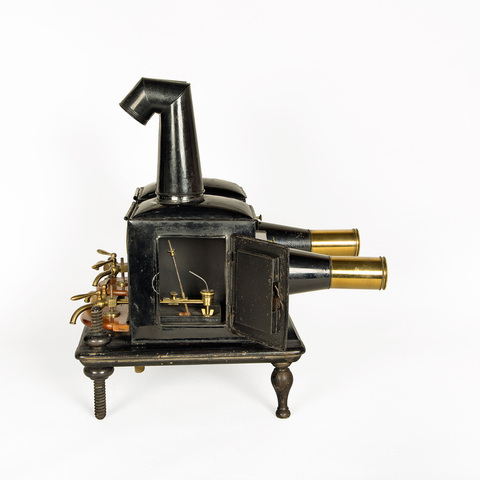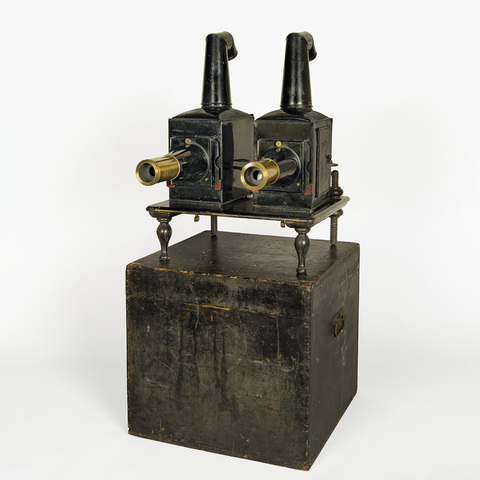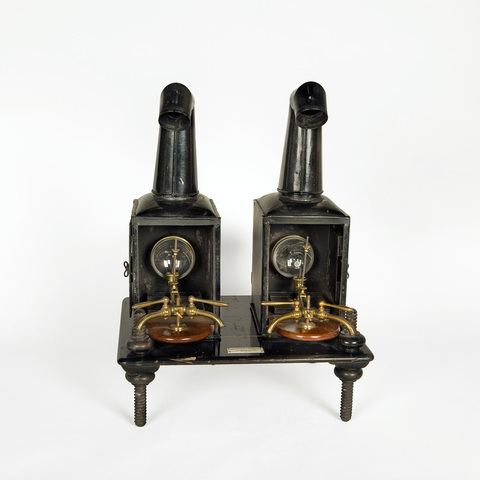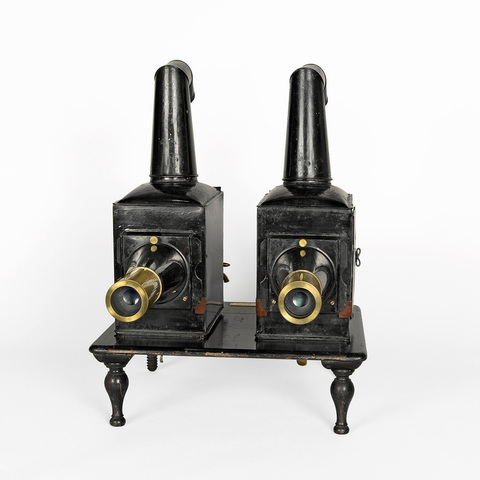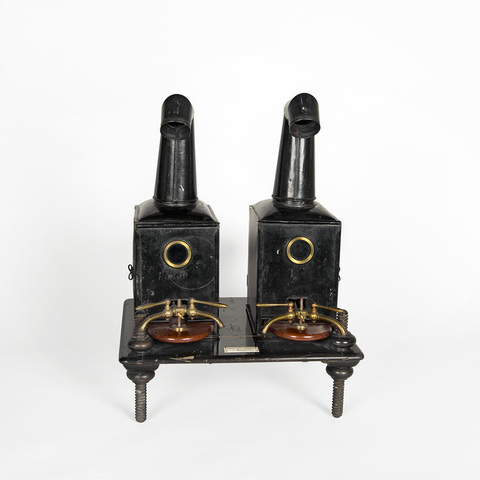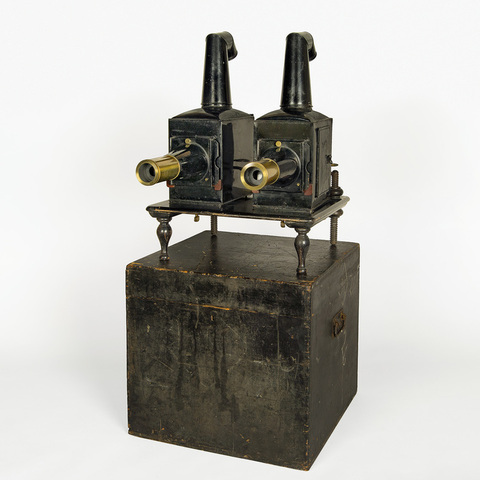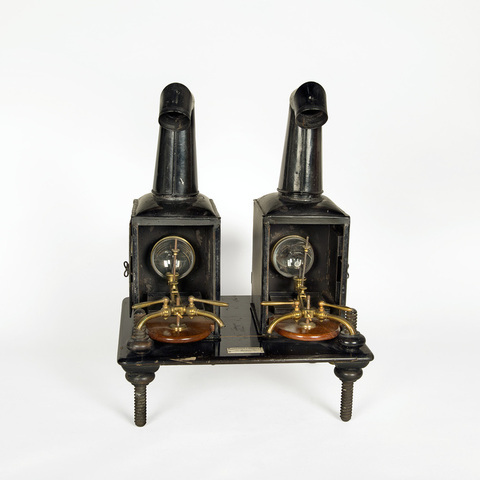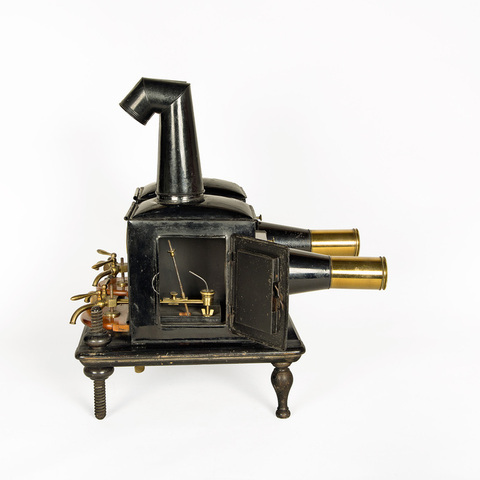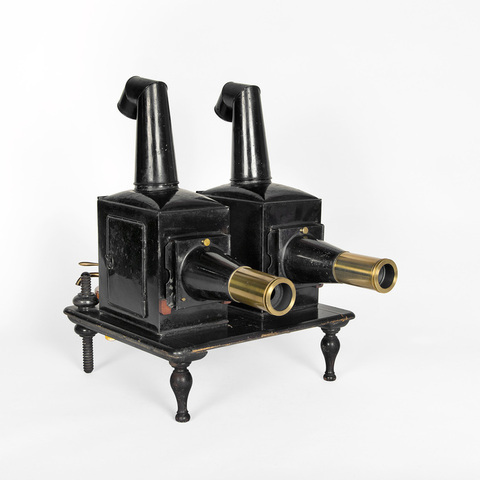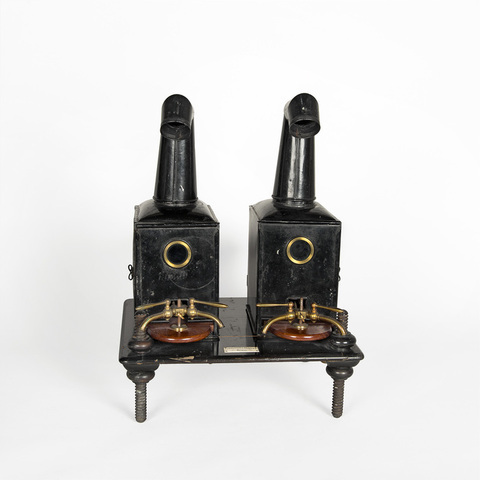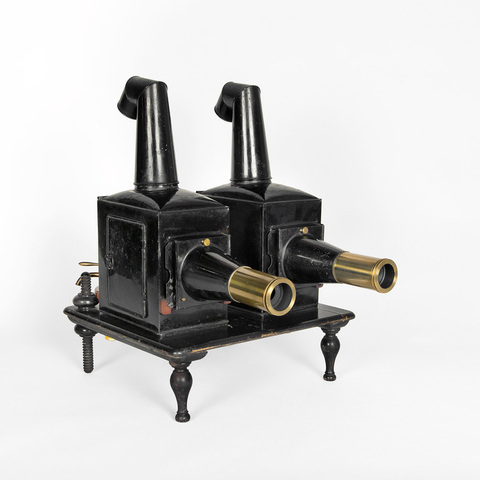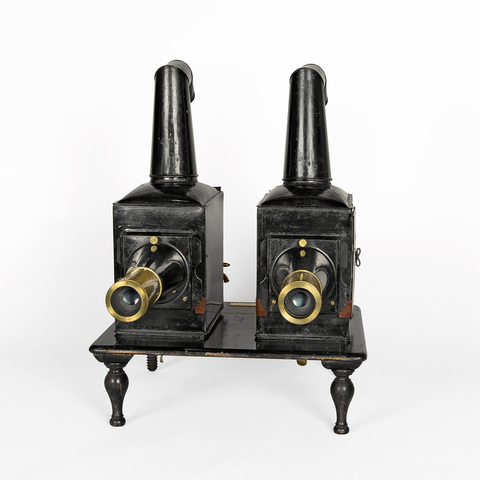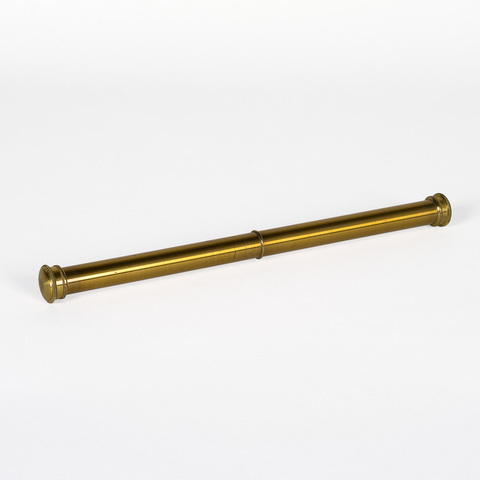Lanternes de projection
Fiche détaillée
Type de l'appareil
deux lanternes (1-2) montées sur table en bois (3) à quatre pieds ; corps en métal peint ; objectifs coulissants ; deux chalumeaux à lumière oxhydrique et bâton de chaux ; robinets fondants pour dissolving-views ; cheminées coudées ; table en bois à quatre pieds ; tube en cuivre pour le transport des bâtons de chaux (4) ; boîte de transport en bois (5)
Auteurs
Informations non disponibles
Fabricants
Philip Carpenter
Londres, 24 Regent Street, Waterloo Place
William Westley
Londres, 24 Regent Street, Waterloo Place
Utilisateurs
Informations non disponibles
Distributeurs
Informations non disponibles
Sujet du modèle
Informations non disponibles
Objectif
2 lentilles condensatrices 9 cm Ø ; 2 lentilles objectif 5 cm Ø (pour chaque lanterne)
Taille de l'objet
Ouvert :
Informations non disponibles
Fermé :
Longueur : 82 cm
Largeur : 50 cm
Hauteur : 67 cm
Diamètre :
Informations non disponibles
Taille de la boîte de transport
Longueur : 56 cm
Largeur : 57 cm
Hauteur : 51 cm
Remarques
Etiquette en ivoire sur la table : "Carpenter & Westley, 24 Regent Street, London".
La "Phantasmagoria Lantern" a été commercialisée par Philip Carpenter à partir de 1821. Cet exemplaire très complet, fonctionnant au gaz oxhydrique, possède encore sa caisse d'origine, son tube pour loger les bâtons de chaux, ses extensions d'objectifs. Il provient de la collection Will Day.
"Philip Carpenter was perhaps the most important person in the history of the magic lantern during the 19th century [...]. He was born at Kidderminster on 18 November, 1776, the son of George and Mary Carpenter. In 1815 he is listed in the trade directories as an optician, with a house and manufactory in Bath Row, Birmingham. Later, he also had a retail shop at 111 New Street. His first claim to fame is as the manufacturer of David Brewster's Kaleidoscope in 1819. [...] It was whilst in Birmingham that he also designed a new and more practical form of magic lantern which he proceeded to supply with a series of slides made by a new copper-plate process, which ensured a greater accuracy in the delineation of the pictures and provided the means for producing them in large quantities. He was thus instrumental in raising the status of the magic lantern from a mere optical novelty or toy, to that of a scientific instrument which could be used for educational instruction as well as amusement. The availability of a pratical projector with a regular supply of superior slides also opened the way for the boom in lantern projection which took place in the last half of the 19th century. [...] With the introduction of the new Phantasmagoria Lantern in about 1821, Carpenter issued the first of his slides made by the new process. These consisted of a set of 18 slides on natural history, as well as some others for which we have no particulars. [...] The success accorded Carpenter's Phantasmagoria Lantern and Copper-plate Sliders must have been the determining factor that induced him to leave Birmingham for London. In July 1826 he removed to 24 Regent Street, on the corner of Jermyn Street. In the meantime, the Birmingham business in New Street was continued till 1837, when it was transferred to a Mr. R. Field. Philip Carpenter died at Regent Street on 30 April, 1833, but the business was continued by his sister Mary, in partnership with William Westley. Mary too was a remarkable person and carried on the business for a number of years" (John Barnes, " Philip Carpenter 1776-1833", The New Magic Lantern Journal, Vol.3, n° 2, décembre 1984, p. 8-9).
Bibliographie
Carpenter & Westley, A Companion to the Improved Phantasmagoria Lantern, containing a list of the subjects, to which is added a Description of the lantern and copper-plate sliders, with the method of exhibiting the dissolving views, London, Carpenter & Westley, s.d.
Carpenter & Westley, Opticians, 24 Regent Street, Waterloo Place, London, S.W., London, c. 1863.
John Barnes, " Philip Carpenter 1776-1833", The New Magic Lantern Journal, Vol.3, n° 2, décembre 1984.
Herman Bollaert, "Phantasmagoriae", The New Magic Lantern Journal, Vol.2, n° 3, janvier 1983.
Stuart Talbot, "The Perfect Projectionist, Philip Carpenter", Bulletin of the Scientific Instrument Society, n° 88, 2006, p. 17-20.
